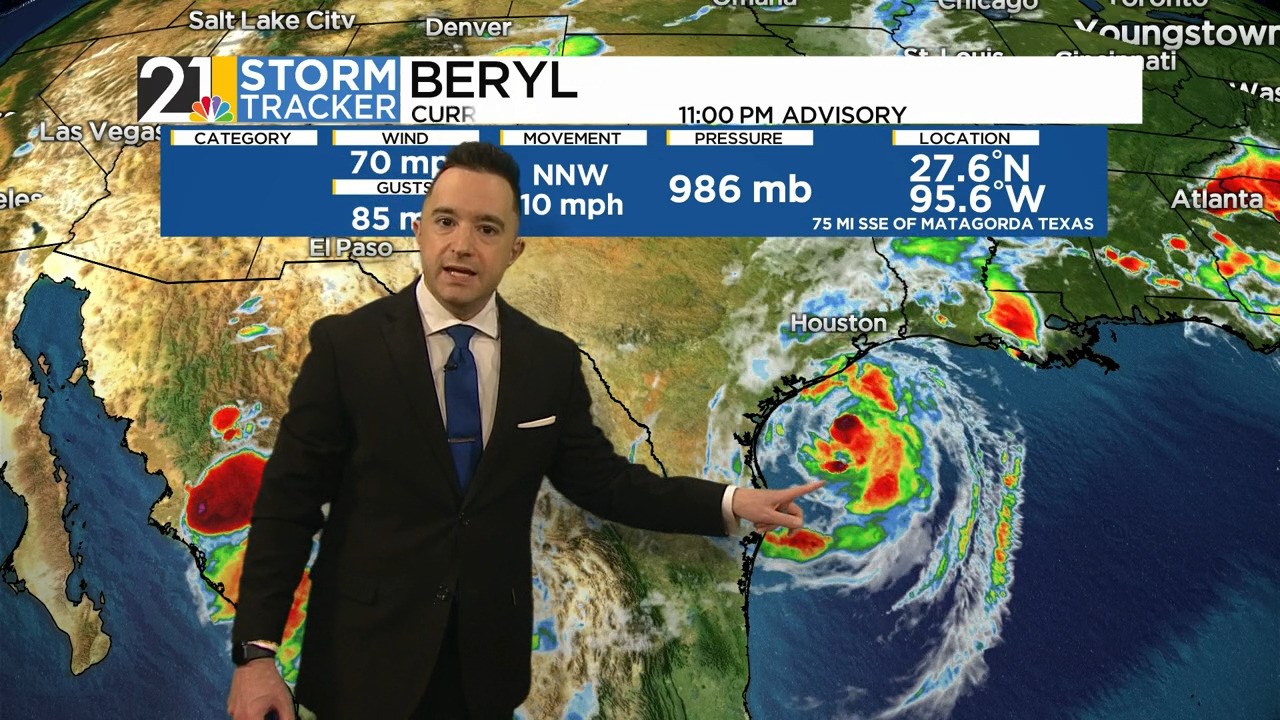Storm Tracking Technology

Storm tracker – Storm tracking is a crucial aspect of weather forecasting, providing valuable information for meteorologists and emergency responders. Several technologies are employed to track storms, each with its own advantages and disadvantages.
Radar
Radar (Radio Detection and Ranging) uses electromagnetic waves to detect and measure the distance, direction, and intensity of precipitation. It is widely used in weather forecasting to track storms, as it can provide real-time data on the storm’s location, size, and movement. Radar can also be used to detect tornadoes, hail, and other severe weather phenomena.
Satellites
Satellites provide a broader perspective on storm systems, allowing meteorologists to track their movement and development over large areas. Satellites can detect visible light, infrared radiation, and other forms of electromagnetic energy emitted by the Earth’s atmosphere and surface. This information can be used to create images of storm clouds, measure wind speeds, and track the movement of weather systems.
Weather Balloons, Storm tracker
Weather balloons are used to collect data from the atmosphere. They are equipped with sensors that measure temperature, humidity, wind speed, and other atmospheric conditions. Weather balloons are launched regularly to provide meteorologists with vertical profiles of atmospheric conditions, which can be used to track the development and movement of storms.
Advantages and Disadvantages
- Radar provides real-time data and can detect severe weather phenomena, but it has limited range and can be affected by terrain.
- Satellites offer a broad perspective and can track storms over large areas, but they are limited by cloud cover and can only provide indirect measurements.
- Weather balloons provide vertical profiles of atmospheric conditions, but they are limited in terms of spatial coverage and can only be launched at specific times.
Storm Forecasting: Storm Tracker

Storm forecasting is a crucial aspect of weather prediction, aiming to provide timely and accurate information about the development, movement, and potential impacts of storms. This process involves a combination of data collection, model development, and verification.
Data collection plays a vital role in storm forecasting. Various sources of data are utilized, including satellite imagery, radar observations, weather station measurements, and atmospheric soundings. These data provide information about current weather conditions, such as temperature, pressure, wind speed, and humidity.
Model Development
Once data is collected, it is used to develop numerical weather prediction (NWP) models. These models are computer programs that simulate the behavior of the atmosphere, taking into account the laws of physics and the interactions between different atmospheric components. By running NWP models, meteorologists can generate forecasts of future weather conditions, including the likelihood of storm formation, their tracks, and intensities.
Types of Storm Forecasts
There are various types of storm forecasts, each providing specific information about different aspects of a storm. Track forecasts predict the path of a storm’s center, while intensity forecasts estimate the strength of the storm in terms of wind speed or pressure. Precipitation forecasts provide information about the amount and type of precipitation expected from a storm.
Challenges and Uncertainties
Storm forecasting is a challenging task due to the complex and dynamic nature of the atmosphere. There are inherent uncertainties in predicting the behavior of storms, particularly in the long term. Factors such as the availability and quality of data, the accuracy of NWP models, and the unpredictable behavior of the atmosphere can all contribute to uncertainties in storm forecasts.
With the ever-changing weather patterns, storm trackers play a vital role in providing timely updates. One such resource is wcpo weather , which offers comprehensive storm tracking services. Its advanced technology allows for real-time monitoring, providing invaluable information for those affected by severe weather events.
As storm trackers continue to evolve, they become indispensable tools for ensuring safety and preparedness.
In the realm of meteorological wonders, storm trackers stand as vigilant sentinels, navigating the turbulent skies to unravel the secrets of nature’s fury. Their gaze extends far and wide, reaching across distant lands to monitor weather patterns. And as the seasons shift, their attention turns towards the vibrant skies of Evansville , where the dance of clouds and winds unfolds with captivating intensity.
Here, storm trackers delve into the intricacies of weather phenomena, unraveling the tapestry of nature’s grand design.